A bicycle ride around Koh Kret: Island in the city
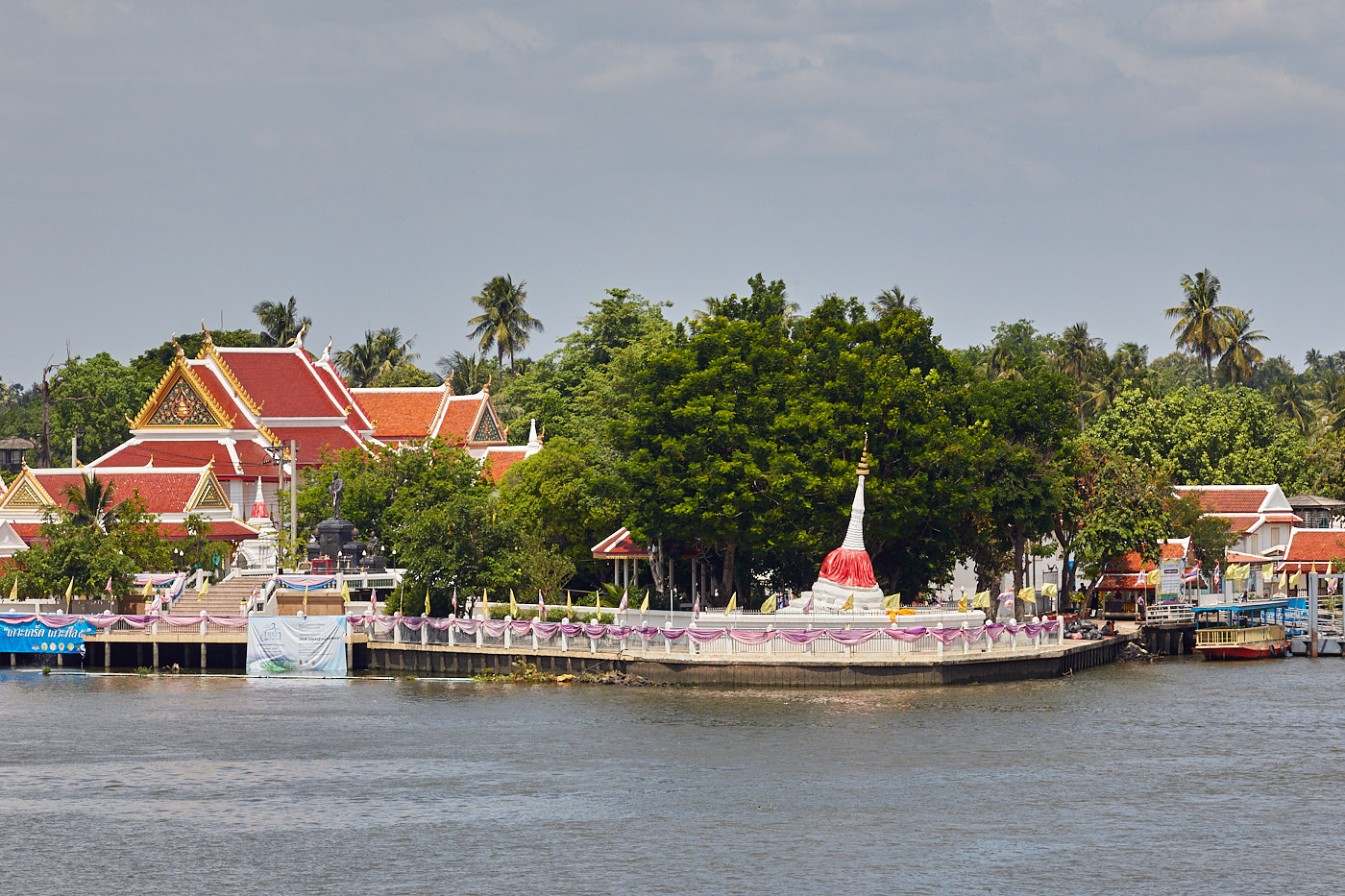
A bicycle ride around Koh Kret: Island in the city
The River of Kings has been redirected several times over the years, for long before the founding of Bangkok the rulers of Ayutthaya had ordered that some of the Chao Phraya’s sumptuous bends be straightened out to ease the transit of goods to and from the Gulf of Siam.
One of the most recent cuttings was dug in 1722 at Pak Kret in Nonthaburi, just to the north of modern Bangkok. The resulting canal, Klong Lat Kret Noi (Kret short cut) shaved 4 kilometres off the journey and carved out a large swampy island which is now known as Koh Kret.
Despite the trappings of modern life around it, the island has remained steadfastly rural and is an oasis of peace just a short hop from the city. There are no bridges, the only way on and off the island is by ferry. There are actually two but the main one leaves from the pier at Wat Sanam Nua in Nonthaburi, crossing at the north-east corner where Klong Lat Kret Noi forks away from the original course.
As I gaze across, waiting to embark, the most striking feature is the gleaming white but lopsided Mu Tao Chedi. It is part of Wat Paramaiyikawat, an old Mon style monastery just a short walk from the pier. The chedi is modelled on the Shwemawdaw Pagoda in Bago, Myanmar but subsidence has caused the spire to tilt north. The monastery houses a marble Buddha crafted in the Mon fashion, some interesting murals and a chapel decorated with delicate European style chandeliers and stucco work on the doors and windows.
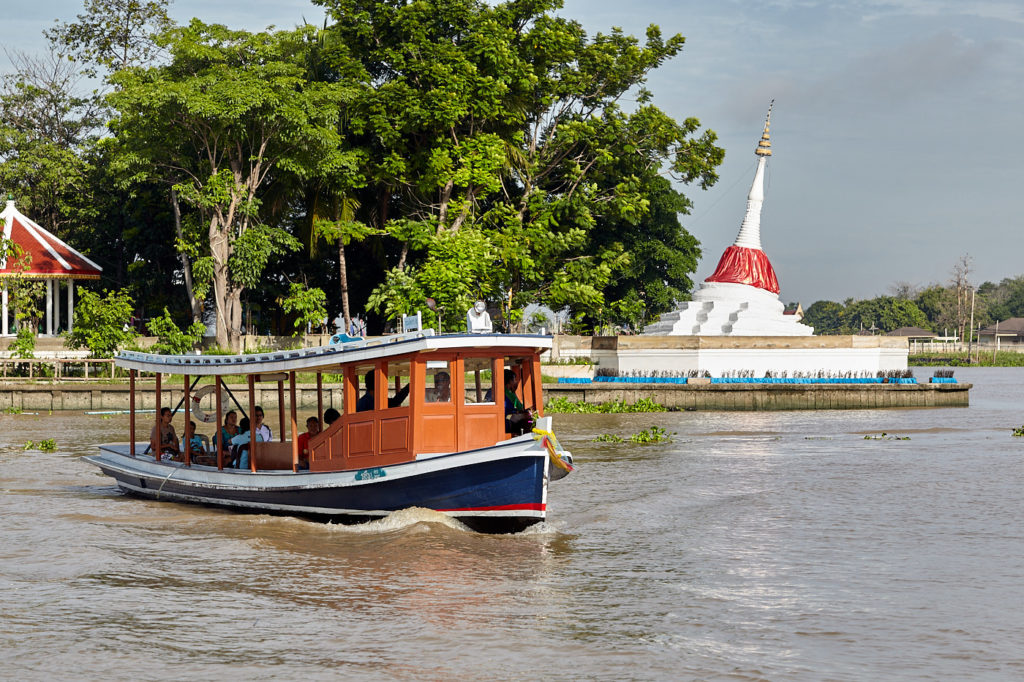
Koh Kret is home to one of the oldest and largest Mon settlements in Thailand. They had arrived in the latter half of the sixteenth century at the invitation of King Taksin after Hongsavatoi, the last independent Mon Kingdom, was sacked by the Burmese in 1753.
The Mon of Koh Kret are renowned for their traditional earthenware pottery. There are five pottery villages in the eastern part of the island. You can still see the old brick kilns, mostly filled with rubble, but you can peer inside and see how the red brick has turned black and glass-like from the intense heat. These days the kilns are powered by electricity but the rest of the process has changed little over the years and craftsmen still spin and carve intricate designs for everything from plant pots to hanging ornaments.
The only transport available is two wheeled. Motorcycle taxis congregate at the pier eager to whisk me around the island in less time than it takes to eat a bowl of noodles. I doubt that I would see much. The main road around the island is only about 5 kilometres so walking is an option but there are bound to be side roads and other diversions to explore.
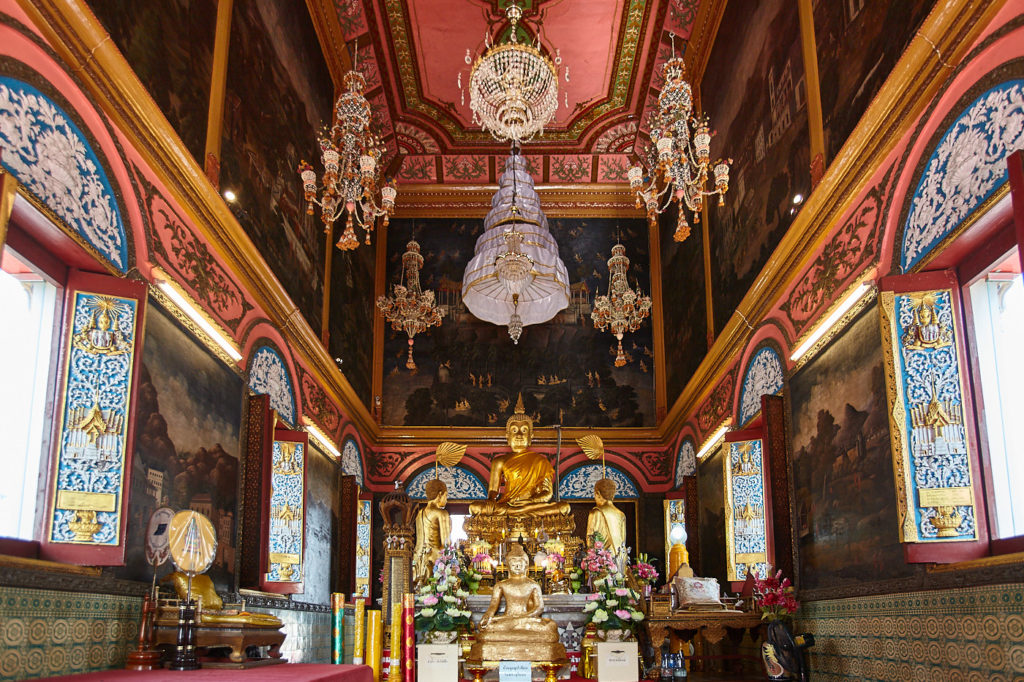
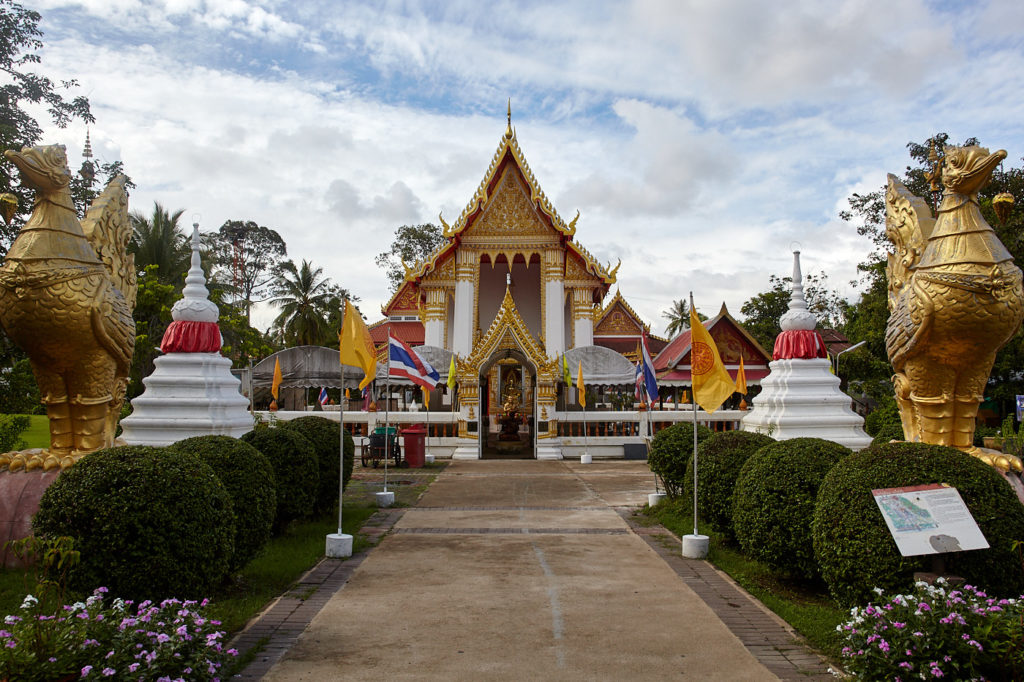

So I opt to hire a bicycle; after all, no adventure is complete without a hint of danger. For 60 baht I take charge of a lime green steed with matching coloured hand grips and a basket on the front. After a few minutes adjusting the seat I climbed on and wobbled off in an anti-clockwise direction.
I take a left in front of the main ferry pier and spin around the back of Wat Paramaiyikawat with the wind in my hair and a song of freedom in my heart. Children giggled and dogs cheered. At least I think they were cheering, they might have been yelling “Get out of my house” or “Mind my tail.” I think both sentiments might have had merit.
I took another tight left, over a little humped back bridge and into the main village which hugs the north-east shore of the island. This is the tourist area and the main drag is actually a narrow tunnel lined with pottery and other souvenir shops. Koh Kret doesn’t get many foreign visitors and most of its tourists are Thai, who come over at weekends. I was there on a Thursday so many of the shops were closed but there were still enough of them open to satisfy all but the most avid souvenir hunter.
The beauty of going on a weekday is that you only have to share the island with the local inhabitants and they are a charming lot, always ready with a warm smile and a cheery Sawadee.
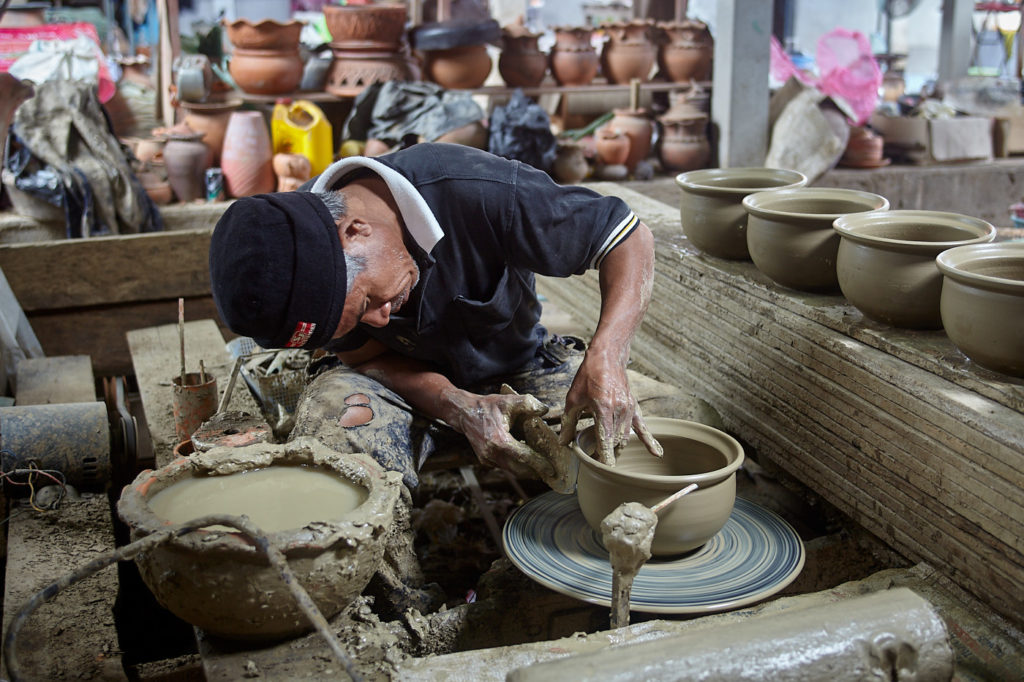
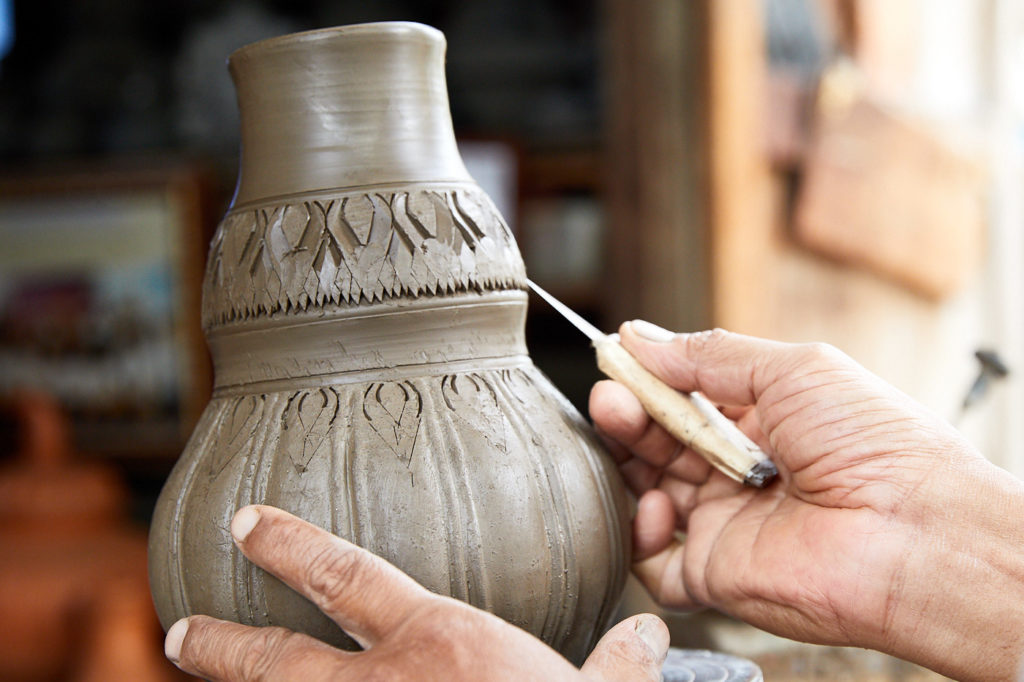
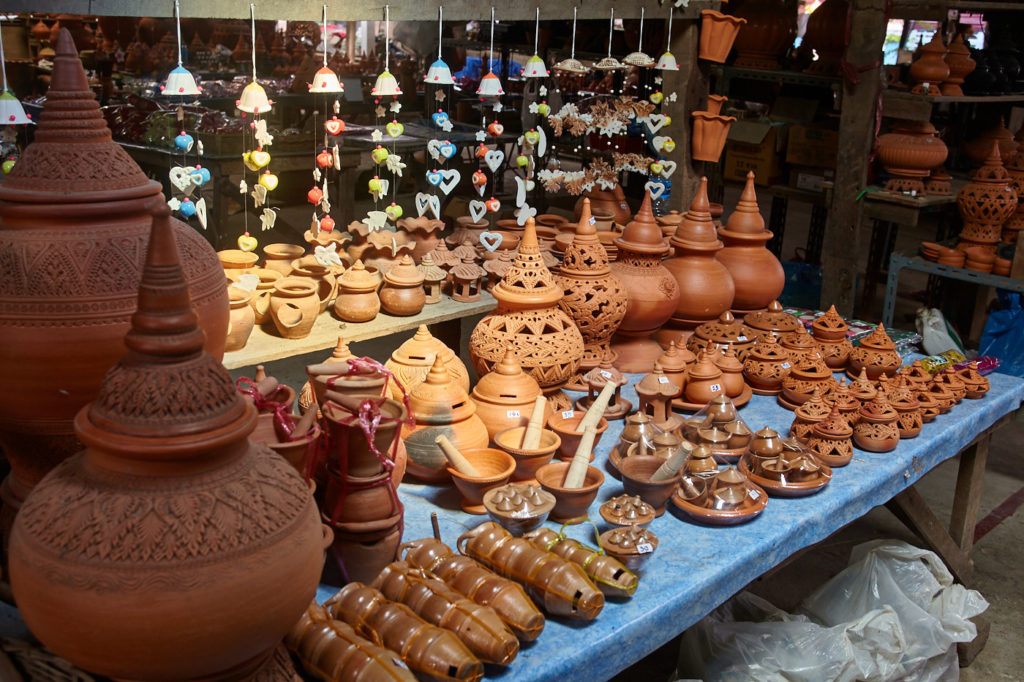
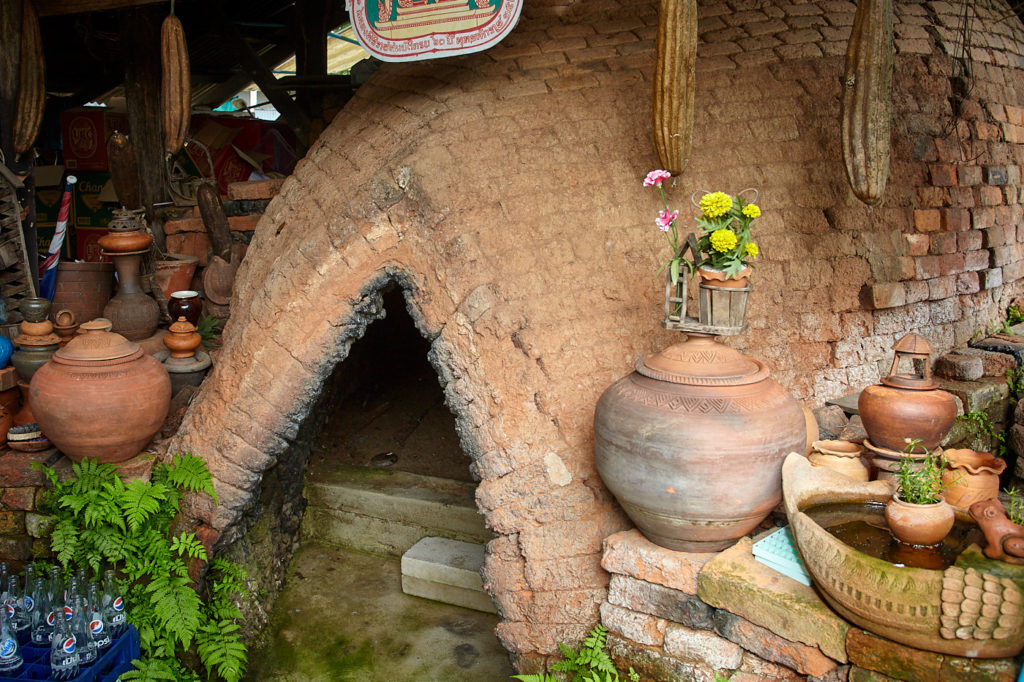
About mid-way through the village is Wat Phai Lom which was built in 1770 and features a chedi modelled after Yangon’s Shwedagon Pagoda. On the opposite bank of the river the imposing 19 metre (62ft) Buddha of Wat Bang Chak keeps watch.
I progress slowly, motorbikes advertise their presence but a bicycle is silent and I am wary of children and dogs popping out from a doorway in front of me. Presently I get beyond the village and the road widens out a little. The road, in fact, is little more than a concrete ribbon raised above the swamp. As the road leads west it also moves in from the river. Houses still line the way but they are becoming less frequent. Side roads shoot off to the right and lead past sleepy villages and invariably to a pier at the water’s edge.
The side roads are slightly narrower and prone to turn at right angles with little warning. Since there are no railings, the slightest lapse of concentration would have me plunging basket first into the sludge below.
This very nearly happened on my first visit. I was pedalling peacefully along when all of a sudden I spotted an old McDonnell Douglas DC3 lurking amongst the water hyacinth. I about turned and headed back to the pier I had just left with the intention of flagging down a passing boatmen to take me a little closer. It must have been lunch time. Usually longtail boats are in plentiful supply but the moment you want one there are none to be seen.

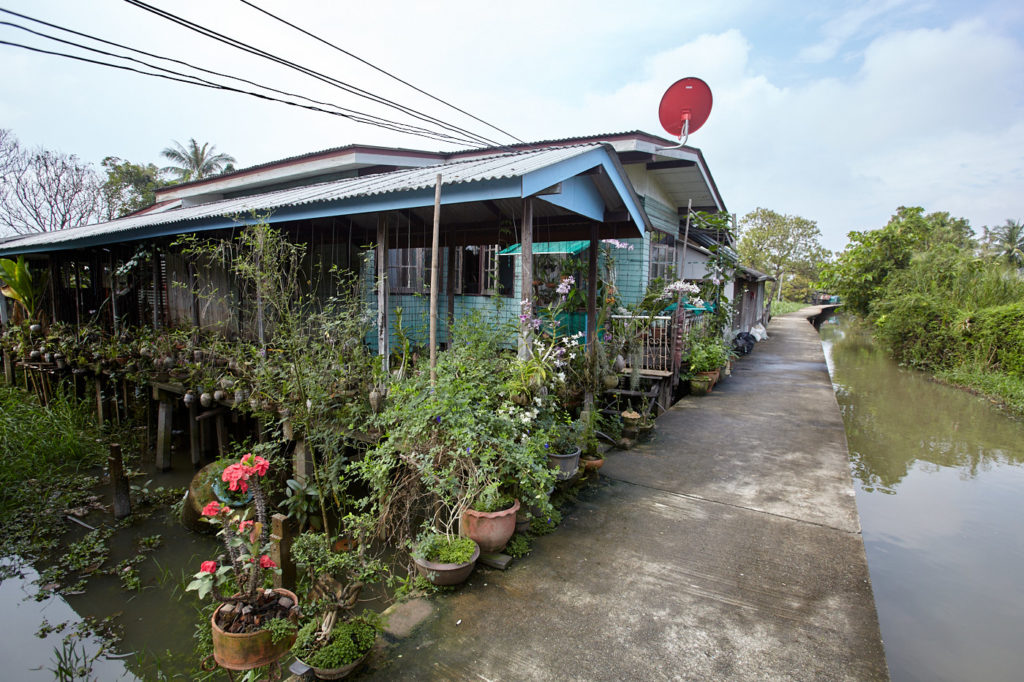
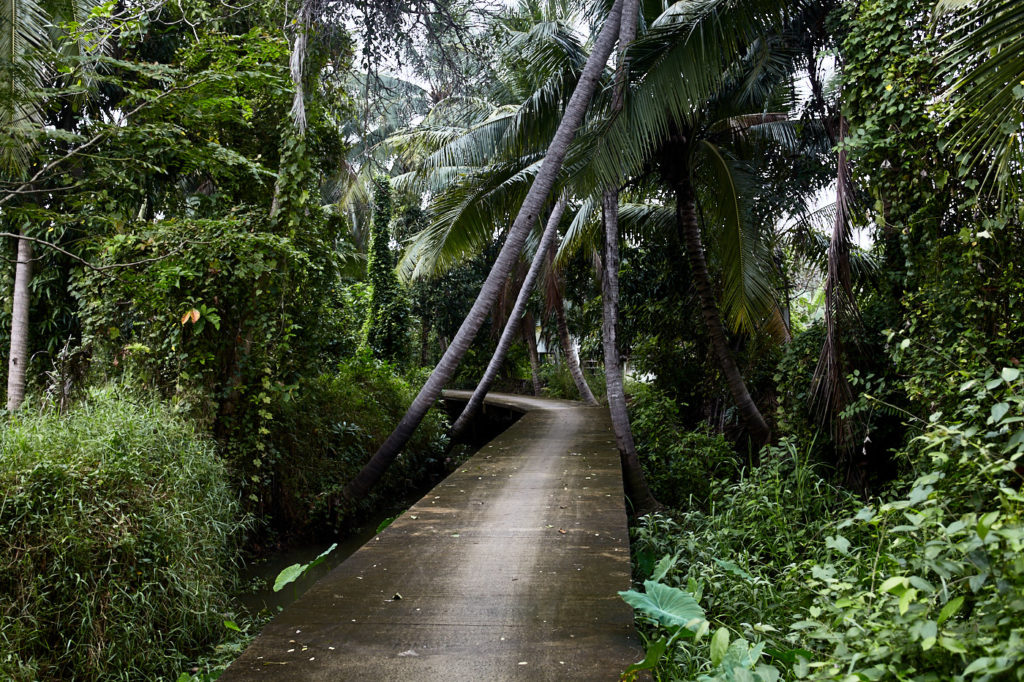
There is however a shaded bench and it is pleasant to just sit and watch the river go by. After about twenty minutes of watching the herons foraging and listening to the distant put-put of boats going about their business on the far bank I decided to give up and attempt a rear approach. A muddy dyke which appeared to be topped with sandbags and used as a path offered a posibility. I followed this for a while but part of one bag gave way and plunged my right foot ankle deep in clay. I eventually found a narrow concrete path which was supported about 1.5 metres above the swamp. It was no more than 30 centimetres wide and like the roads lacked any kind of hand rail to help steady anyone walking along it.
It should be wide enough, I thought, and gingerly took a few steps but with a heavy camera bag and sandals caked in finest terra-cotta my confidence deserted me. The plane was still a considerable distance away and I wasn’t even sure the path would lead me to it anyway so I reluctantly admitted defeat. Questions such as “Who would want to put a DC3 in the bank of a river?” and “How on earth did they get it there anyway?” would have to wait for the next visit. Sadly by the time that came around the plane had gone
The main road peels away from the north shore about half way along and loops back through the middle of the island. In the fertile interior tropical gardens, tall palms, vegetable plots and and untamed scrub happily co-exist. Here many of the side roads join up to create a small network linking paddies, plantations and villages. Occasionally the agreeable scent of sandalwood incense mingles with the shouts of children as they dash indoors to tell the grown-ups about the farang arriving on a bicycle. Paths are usually flanked by a canal and, in the villages, pretty silver and gold garuda-topped lamp posts.
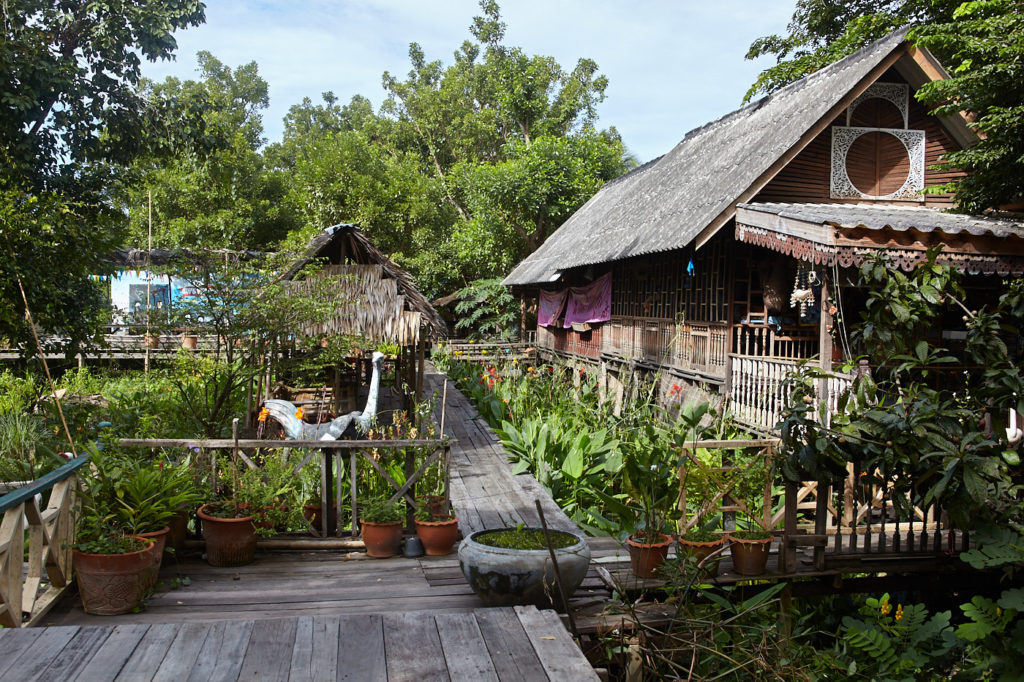
Further along the central stretch there is the Kret Buddha Garden where even the sporadic buzz of passing motorbikes fades away. I wander along wooden duckboards above the swamp surrounded by butterflies as they flit amongst the canna lilies, candle bushes and orchids. Small bamboo pavilions house ox carts, canoes, baskets and urns. There are numerous shady places to sit and enjoy the tranquility but there are mosquitos too and they don’t have the manners to wait until suppertime to feed.
The final stretch of this gentle odyssey takes me past the secondary ferry crossing where I find an old lady selling small jars of green balm. I show her my mosquito bites and she shows me a thumbs-up. I take a jar and she tucks a hundred baht note into her apron.